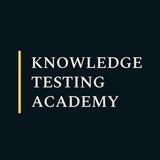DIGOXIN is used to control the ventricular rate in atrial fibrillation or flutter.
Drugs that can be used to increase heart rate include ATROPINE, ISOPROTERENOL, and EPINEPHRINE.
Nonsteroidal anti-inflammatory drugs (NSAIDs), including aspirin, inhibit platelet aggregation and prolong bleeding time.
Platelet glycoprotein IIb/IIIa receptor antagonists prevent platelet aggregation by blocking the binding of fibrinogen and von Willebrand factor to the glycoprotein IIb/IIIa receptor on the surface of the platelet.
HEPARIN interferes with clotting factor activation in both the intrinsic and extrinsic pathway.
PROTAMINE is a specific heparin antagonist that can be used to treat heparin-induced hemorrhage.
Administration of vitamin K can overcome the anticoagulant effects of the oral agents, but the effect takes about 24 hours.
Anticoagulant and antiplatelet drugs are administered to prevent the formation or extension of clots. Thrombolytic drugs are used to lyse already formed clots.
Clot dissolution and reperfusion are more likely if therapy is initiated early after clot formation. Clots become more difficult to lyse as they age.
Phosphodiesterase III inhibitors (pentoxifylline and cilostazol) are used to treat intermittent claudication.
Iron salts, such as ferrous sulfate, are used as iron supplements to treat iron deficiency anemia.
Memantine is a noncompetitive antagonist at the NMDA subtype of glutamate receptor.
Tolerance is a physiological state characterized by a reduced drug effect with repeated use of the drug. Higher doses are needed to produce the same effect.
Cross-tolerance means that individuals tolerant to one drug will be tolerant to other drugs in the same class, but not to drugs in other classes.
